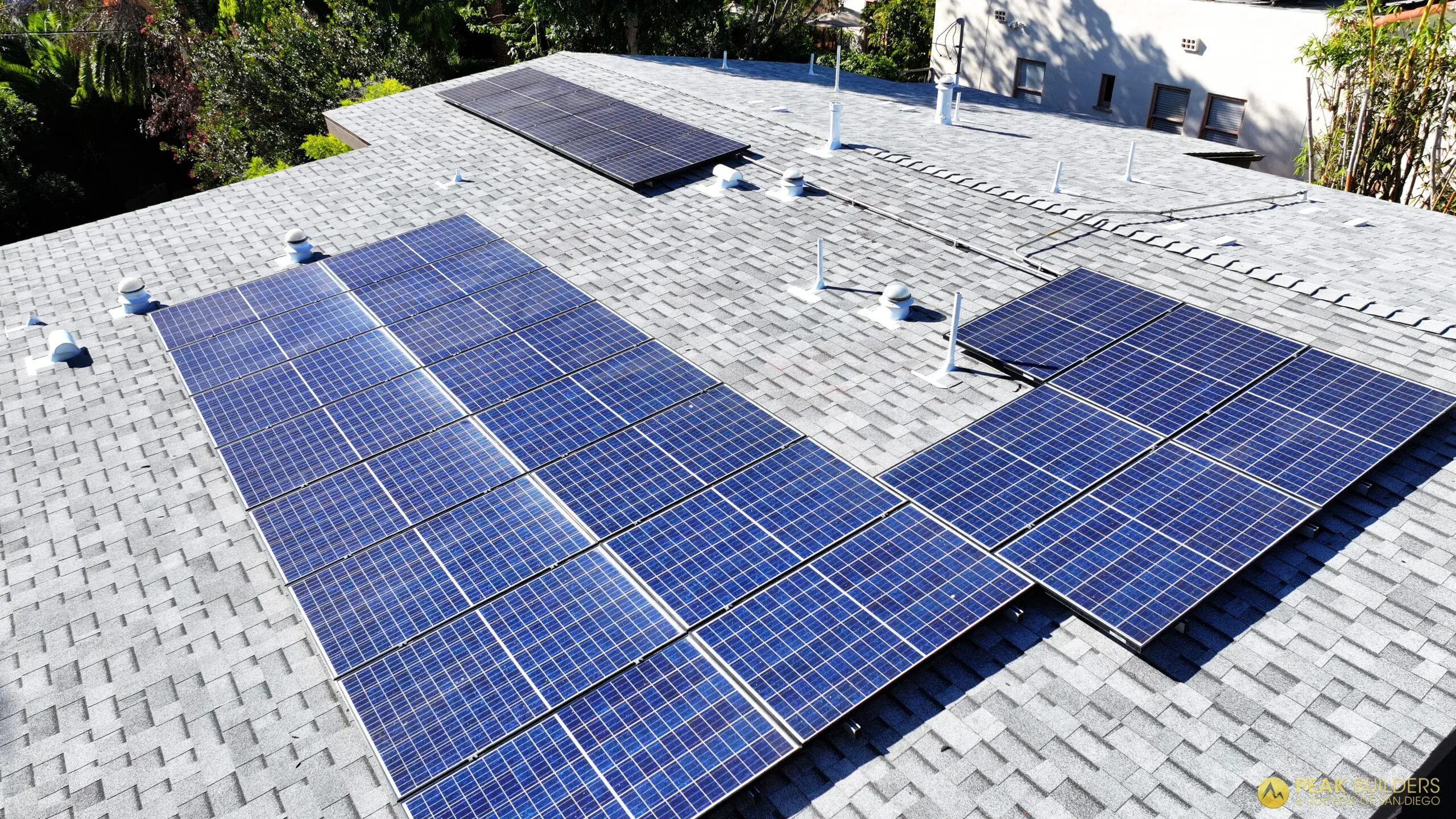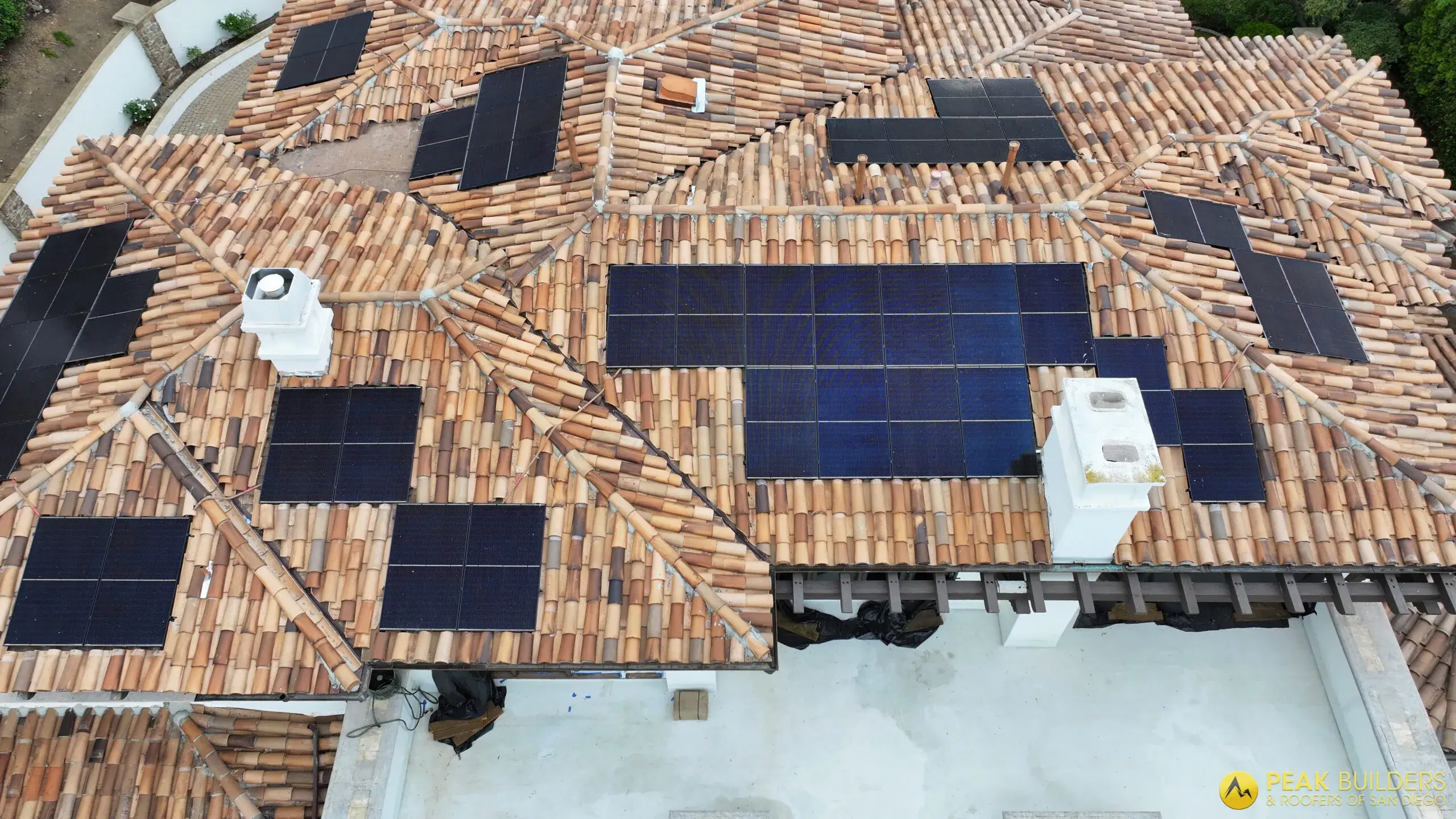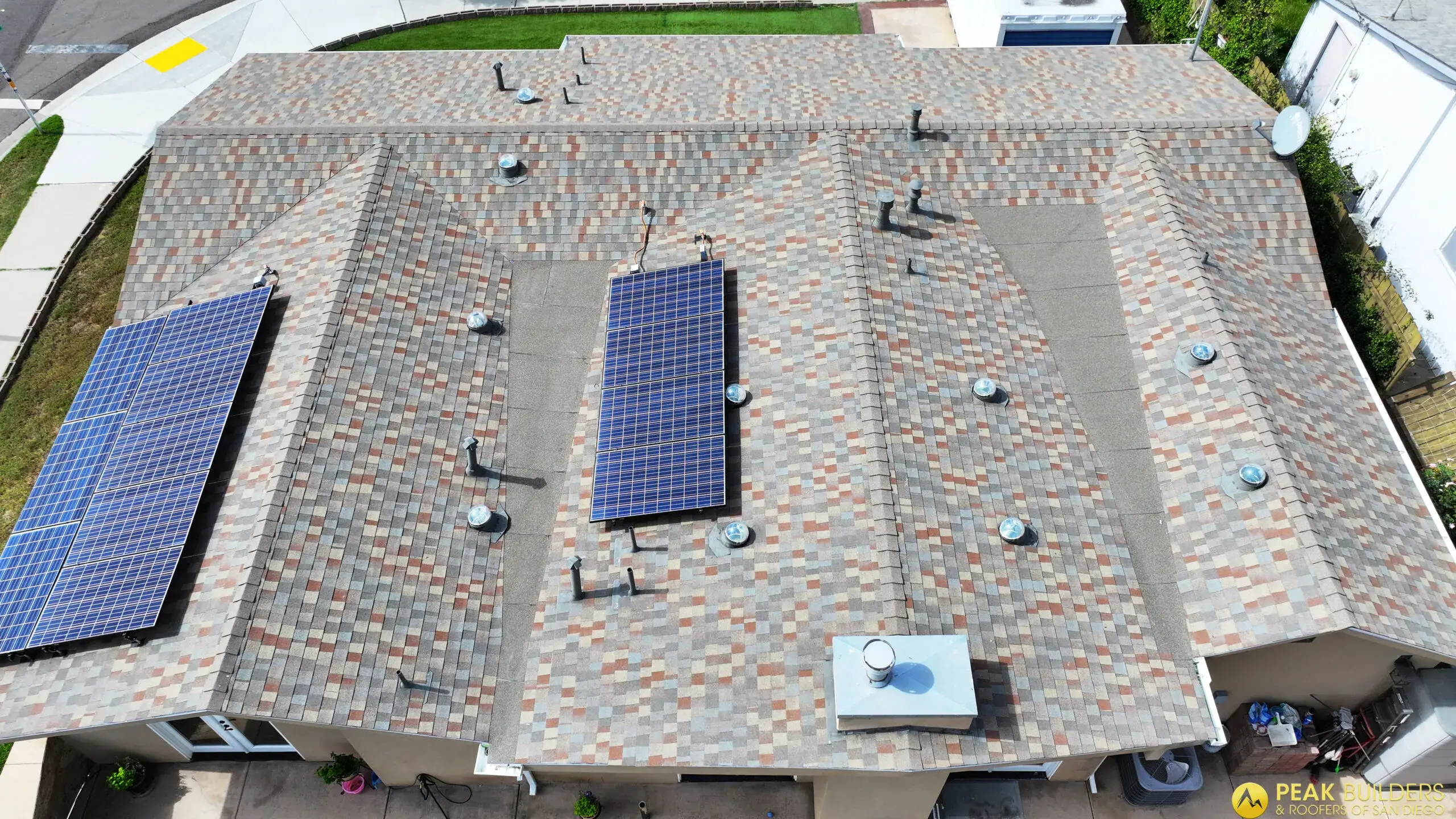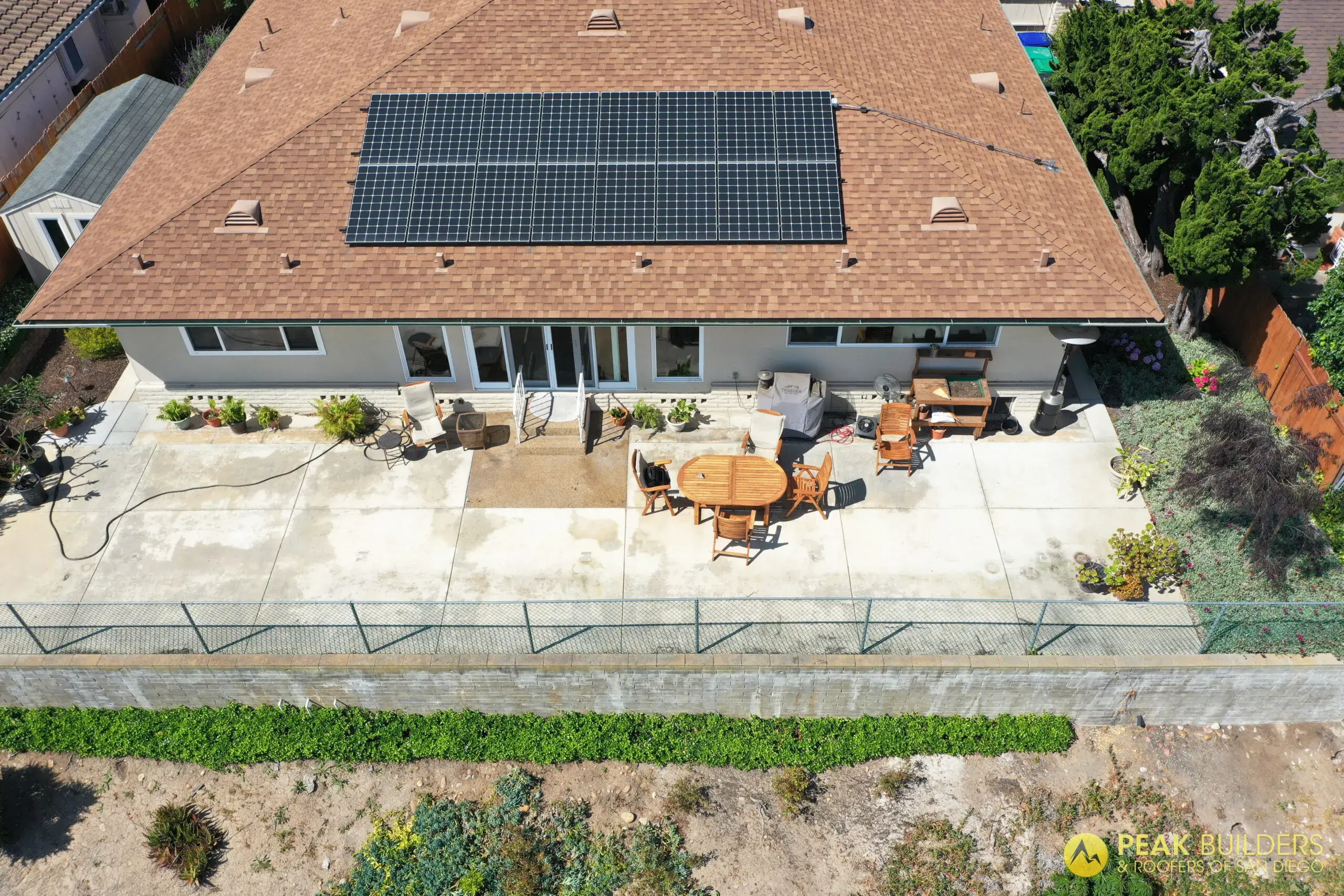
Balancing Modern and Traditional in Transitional Kitchen Design
Discover how to masterfully blend modern and traditional elements in transitional kitchen design for a seamlessly stylish yet functional space.

Discover how to masterfully blend modern and traditional elements in transitional kitchen design for a seamlessly stylish yet functional space.
At Peak Builders, we know that your home deserves the best. Whether you’re in need of a new roof or looking to remodel your space, we’re here to help. We’ll discuss your unique needs, desired style, and the options that will work best for your home.

Choosing the right time to install solar panels for your home can significantly impact the efficiency and cost-effectiveness of your investment in solar energy. Various factors, including seasonal changes and current energy consumption, can influence the ideal moment for your home’s solar installation. To optimize the benefits of solar energy, it’s crucial to understand how these elements affect the performance and savings of your solar system.
Spring and summer are often considered the best seasons to install solar panels because they provide the maximum amount of sunlight, allowing your new solar energy system to start generating electricity immediately. However, installing solar panels during these peak seasons might also mean higher demand for professional solar installers, which can sometimes lead to longer wait times and potentially higher costs.
Conversely, fall and winter might offer quicker installation timelines and occasional discounts from solar companies looking to keep business steady during slower periods. Although the solar energy generated might be slightly lower in these months due to reduced sunlight, your panels will still produce enough electricity to start offsetting your home’s energy usage. By considering the seasonality and your home’s specific energy needs, you can make a more informed decision about when to install your solar panels.
Beyond seasonal considerations, you should also think about your current energy consumption and future energy goals.
If you’re facing high energy bills or planning major future energy needs like an electric vehicle, installing solar panels as soon as possible could provide immediate savings and long-term benefits. Moreover, advancements in solar technology mean that even in less-than-ideal conditions, modern solar panels can still efficiently capture and convert solar energy, ensuring your home remains energy efficient year-round.
Ultimately, the best time to install solar panels for your home is when you’re ready to capitalize on the long-term advantages of solar energy and when your circumstances align with your solar goals. By evaluating not just the seasonal aspects but also your home’s current and future energy needs, you’ll be well-positioned to make an informed investment in solar power. Whether it’s spring, summer, fall, or winter, there’s a perfect time to install solar panels that aligns with your home’s unique energy demands and harnesses the full potential of solar energy.
When considering installing solar panels, it’s crucial to prioritize safety throughout the solar panel installation process. Ensuring safety while working with solar energy systems involves multiple steps and precautions that shouldn’t be overlooked. First, always adhere to local building codes and regulations. These rules are designed to make sure solar installations are safe and compliant with all local laws. Additionally, personal safety measures are essential. Always wear appropriate safety gear such as helmets, gloves, and non-slip footwear when working on rooftops.
Electricity can be hazardous, and solar installations are no exception. Properly shutting off the power supply to the installation area is a critical step. Solar energy systems involve live electrical components, so avoiding electrical shocks during the installation is paramount. Another consideration is the weight of the solar panels and mounting equipment. Panels can be heavy and cumbersome to handle, requiring more than one person to install them safely.
Furthermore, the inclination and structure of your roof play a significant role in the safety of solar panel installation. Ensure your roof can support the additional weight and that it’s stable enough to handle the panels and related equipment. Inspecting the structural integrity of the roof before installing solar panels can prevent potential damage or hazards.
Moreover, dealing with ladders and heights is an inherent part of solar panel installation. Always use sturdy ladders and secure them properly. The risk of falls is significant, necessitating careful positioning and operation of ladders and other climbing gear. In some cases, it might be wise to use scaffolding for added safety.
Grounding is also a critical aspect of safe solar energy systems. A good grounding system protects against electrical surges and potential lightning strikes which can be harmful and damaging. Grounding the entire solar system ensures an additional layer of safety.
Lastly, always follow the manufacturer’s instructions and guidelines when installing solar panels. These instructions are tailored specifically for the solar equipment you’re using, ensuring you get the most efficient and safe installation. Consulting with professional solar installers can also offer additional peace of mind. Their expertise can help you navigate and mitigate any safety risks involved. By taking these necessary safety considerations into account, you can ensure a secure and effective solar panel installation, optimizing your energy output while maintaining the utmost safety standards.

When considering the installation of a solar energy system for your home, there are several crucial things you need to know before diving in. First and foremost, it’s essential to assess your home’s suitability for a solar system. Not every roof or location will be ideal for harvesting solar energy. Factors like the orientation and angle of your roof, the amount of sunlight your area receives, and potential shading from trees or buildings can all impact the efficiency of your solar energy system.
Before installing solar panels, it is advisable to conduct a thorough analysis of these elements to ensure optimal energy production. Another key consideration is understanding your household’s energy needs. By evaluating your current and future energy usage, you can better determine the size and capacity of the solar system required to meet your needs.
This step is crucial for maximizing the return on your investment and ensuring your solar energy system is appropriately sized. Furthermore, the financial aspect of installing solar panels is something you shouldn’t overlook. While the initial costs can be significant, it’s important to explore available incentives, rebates, and financing options that can make installing solar panels more affordable.
Many regions offer programs to help offset the costs of a solar energy system, making it a more viable option for homeowners. Additionally, it’s essential to get multiple bids and site assessments from different solar system installers. This not only helps in getting the best price but also ensures that you are working with reputable professionals who can provide comprehensive services from installation to maintenance. Moreover, understanding the permitting and regulatory requirements in your area is crucial before you install solar panels.
Different municipalities have various protocols and requirements that need to be met, and navigating these can sometimes be complex. Lastly, consider how your existing energy setup will integrate with the new solar energy system. For example, does your utility company allow net metering, and how will your solar energy system connect to the grid? By addressing these key considerations beforehand, you can ensure a smoother, more efficient solar panel installation process. With all these factors in mind, you’ll be better prepared to enjoy the long-term benefits of solar energy.
Before diving into the exciting process of solar power system installation, it’s crucial to investigate your home’s energy efficiency. An energy-efficient home can maximize the benefits derived from a solar power system and ensure you’re not just adding new power but also optimizing the current energy usage. Conducting an energy audit is a great first step. It helps you identify areas where energy is wasted, thus providing a clear picture of your home’s overall energy consumption.
From simple fixes like sealing drafts or adding insulation, to more significant upgrades such as installing energy-efficient appliances, these steps can significantly decrease your overall energy demand. When you lower your energy consumption, you’ll ultimately need a smaller solar power system to meet your energy needs. This not only saves you money but also reduces the number of solar panels you’ll need on your roof.
Speaking of roofs, it’s also essential to assess the condition of your roof before starting the solar panel installation. An energy-efficient home is not just about reducing consumption but also ensuring that the infrastructure, like your roof, is in good condition to support the system. A solid, well-maintained roof can prolong the life of your solar power system, offering better returns on your investment. Once you’ve tackled energy efficiency improvements in your home, you’ll be better prepared to choose the right solar panels and system size that suits your needs.
Consider how much office or home energy you use and what part of it can be offset by solar energy. These considerations are foundational in determining the size and layout of the solar power system. An accurate assessment of your home’s energy profile, including understanding peak energy usage times, will aid in selecting the right system and optimizing its placement on your roof.
Ultimately, the goal is to create a harmonious balance between your home’s energy efficiency and the solar power system. Proper planning and assessment can make all the difference. By investigating and enhancing your home’s energy efficiency, you’re setting a solid foundation for a successful solar power system installation. This careful preparation will help ensure that your solar system not only meets your energy needs but also delivers optimal performance and cost efficiency for many years to come.

Before diving into the installation of a solar power system for your home, it’s crucial to assess your solar potential and panels options. The first step in evaluating your home’s solar potential involves analyzing factors like your location, the amount of sunlight your home receives, and your home’s roof characteristics. These factors influence the efficiency and energy output of your solar system. Not every home is ideal for solar panels; therefore, consideration of shading, roof orientation, and roof space is vital.
Tools like Google’s Project Sunroof can help you understand your home’s solar potential and the amount of sunlight it receives.
Once you’ve assessed your solar potential, the next step is choosing the right panels for your home. There are several types of solar panels available on the market, each with different efficiency levels, costs, and aesthetics. Monocrystalline panels, known for their high efficiency and sleek appearance, might be perfect for residential use.
Polycrystalline panels are a cost-effective option, though slightly less efficient than monocrystalline panels. Thin-film solar panels, another option, are flexible and lightweight, making them suitable for unique roof styles but generally less efficient than their crystalline counterparts.
When selecting solar panels, also consider the manufacturer’s warranty, as a long-term warranty can provide assurance of the panel’s durability and performance over time. The combination of your home’s solar potential and the right selection of panels will maximize your energy efficiency and return on investment. It’s also advisable to consult with multiple solar installers to get a better understanding of the best solar system for your home and to obtain bids and site assessments. This helps ensure you’re making an informed decision tailored to your unique home requirements.
Assessing your solar potential and panels options is a critical phase in the solar power system installation process for your home. By thoroughly evaluating these variables, you can optimize your home’s energy use, reduce dependency on the grid, and invest in a sustainable future. Remember, understanding your home’s solar potential and making well-informed panel choices can significantly enhance the efficiency and long-term benefits of your solar installation. Your path to harnessing solar energy begins with careful planning and consideration of all available solar system options for your home.
Before diving into a solar energy system installation for your home, it’s essential to estimate your solar electricity needs accurately. First, determine how much energy your household consumes on average. Look at past utility bills to get a sense of your monthly usage. If you have an office at home, include its energy consumption as well. This will help you gauge the size of the solar energy system you need. Remember, the efficiency of your solar energy system will also depend on your roof’s sun exposure and the types of technologies employed.
Start by calculating your daily energy consumption in kilowatt-hours (kWh). Evaluating your roof’s capacity to hold the solar panels and its orientation towards the sun is crucial for an efficient solar energy system. Do consider technologies such as solar inverters and monitoring systems that optimize energy production. Energy storage solutions can additionally enhance the effectiveness of your solar energy system by storing excess energy produced during peak sunlight hours for later use.
Ensure your roof is in good condition, as installing solar panels requires structural stability. Consult with professionals who specialize in assessing roofs for solar energy systems to guarantee your installation is safe and effective. Different technologies in solar panel design can influence how much energy is harnessed and converted into usable electricity. Innovations in solar energy technologies have made it easier to customize solutions that specifically meet your household’s energy demands.
By understanding your home’s energy usage thoroughly, you can better predict your requirements and choose the appropriate solar energy system. Factoring in whether you work from an office at home can adjust your calculations and help in selecting the right set of technologies. With a detailed analysis, you can achieve optimal energy output and ensure your solar energy system effectively meets your needs.
In summary, estimating your solar electricity needs involves a careful review of your current energy usage, evaluating your roof’s capacity, and selecting the best technologies to maximize efficiency. Comprehensive planning will ensure your solar energy system is both efficient and sufficient for your household’s energy requirements. Leveraging advanced technologies in solar energy and assessment tools can provide a clearer picture of what you need to achieve energy self-sufficiency.

When you’re ready to install solar panels for your home, one of the key steps is to obtain bids and site assessments from solar installers. This process ensures you get the best value and a solar energy system tailored to your specific needs. Start by researching and shortlisting reputable solar panel installation companies in your area. It’s crucial to consider companies that offer comprehensive services, including thorough site assessments and transparent pricing. These assessments will evaluate your home’s suitability for a solar energy system, taking into account factors like roof condition, shading, and orientation. When you request bids, ensure each proposal details the system’s size, estimated energy production, costs, and any warranties.
During the site assessment, the installer will visit your home or office to inspect the roof or ground area where the solar panels will be installed. They will measure the available space, check for structural integrity, and analyze shading from trees or nearby buildings. This assessment is critical for designing an efficient and effective solar energy system. Additionally, the installer may inquire about your current energy usage to match your consumption with the appropriate solar system size. Accurate site assessments can lead to more effective solar panel installation, optimizing your investment in solar energy.
Once you gather multiple bids, compare them not just on cost but on the quality of equipment and the reputation of the installers. Look for companies with a solid track record in solar panel installation, and ensure they use high-quality panels and inverters. Reputable installers will also offer performance guarantees and assistance with permits and approvals. This way, you can rely on your solar energy system to deliver long-term energy savings and environmental benefits.
Ultimately, obtaining bids and site assessments from multiple solar installers provides you with valuable insights and options for your solar energy system. By diligently comparing proposals and ensuring thorough site assessments, you’ll be well-equipped to make an informed decision. This step is essential to harness the power of solar energy efficiently, whether the installation is for your home or office. Remember, a well-planned solar panel installation can significantly enhance your property’s energy efficiency and reduce your reliance on traditional energy sources.

Installing a solar system for your home can significantly reduce your energy bills while helping the environment. However, the upfront costs can be a concern for many. Understanding solar system financing and incentives is crucial to make the transition to solar energy more affordable. Various financing options are available, such as solar loans, which allow you to pay for your system over time, often with little to no down payment. Many financial institutions offer solar-specific loans with favorable terms because they recognize the long-term savings potential. Additionally, leasing a solar system is an option where a third party owns the system, and you pay them a monthly fee, often less than your current energy bill.
Beyond these financing options, numerous incentives can significantly reduce the initial cost of installing solar panels on your roof. The Federal Investment Tax Credit (ITC) is a major incentive, allowing you to deduct a significant percentage of your solar system’s installation cost from your federal taxes. Some states and local governments offer additional incentives, such as rebates, property tax exemptions, or sales tax incentives. These state-specific incentives can make a substantial difference in the overall cost of your solar energy system.
Don’t overlook the benefits offered by your local utility company. Some utility companies provide rebates for installing solar panels, and many offer net metering, which credits you for the excess energy your solar system generates, offsetting your energy costs when the system isn’t producing. This can be a great advantage during cloudy days or at night when your energy usage might exceed your solar production.
If you’re considering switching to solar energy for your home or office, it’s also important to explore any workplace incentives. Some employers offer programs that assist with the cost of installing solar panels, either through direct financial contributions or partnerships with local solar installers. These workplace incentives can make your transition to solar energy even more accessible and affordable.
Understanding the various financing and incentive opportunities available will help you make an informed decision about installing solar panels on your roof. It will also ensure that you maximize your savings and the benefits of your new solar energy system. Don’t hesitate to consult with a solar energy professional to discuss the best financing and incentive options tailored to your situation.

When you decide on a solar panel installation for your home, it’s crucial to work closely with both your installer and your utility company. By collaborating with experienced solar panel installation companies, you ensure that the solar system is tailored specifically to your home’s needs. The first step in the solar panel installation process is selecting the right panels and ensuring your roof is suitable. A professional solar system installer will assess your roof’s structure, orientation, and shading to determine the best placement for the panels, ensuring optimal efficiency.
Once the assessment is complete, your installer will then handle obtaining necessary permits and scheduling inspections. It’s important to have open communication with your installer to remain informed about the project’s progress. They will also coordinate with the utility company to ensure your new solar panels are integrated seamlessly into the local grid. This collaboration is essential for activating your solar system, allowing your home to start benefiting from the solar energy.
Moreover, working with your utility company can help you understand the various incentives and rebates available for solar panel installations. These financial incentives can significantly reduce the overall cost of installing solar panels for your home. Many utility companies offer net metering, which allows you to sell excess solar electricity back to the grid, creating additional savings on your energy bills.
During the solar panel installation process, your installer will also educate you on maintaining the panels and the solar system for long-term efficiency. Proper maintenance, such as cleaning the panels and ensuring there are no obstructions like tree branches, is crucial to keep your system working effectively. Most reputable solar panel installation companies provide warranties and ongoing support to address any issues that may arise.
In conclusion, collaborating with both your installer and utility company is a vital part of the solar panel installation journey. This teamwork ensures the solar system is installed correctly on your home’s roof, complies with local regulations, and is financially beneficial. By taking these steps, you can enjoy the numerous advantages of having solar panels, including reducing your carbon footprint and cutting down on energy costs. So, for a successful solar power system installation, always ensure you’re working with trusted panels and system experts, and never hesitate to reach out to your utility company for assistance and support.
By understanding the steps involved in solar power system installation and knowing how to install solar panels for your home, you are well on your way to reducing energy costs and promoting sustainable living. Remember to follow manufacturer guidelines, secure the necessary permits, and consider consulting with a professional to ensure a smooth installation process.
Harnessing the power of the sun will not only benefit your household but also contribute to a greener future for our planet. Ready to get started? Begin your journey to energy independence today and enjoy the many benefits of solar energy.
Making homes beautiful one roof at a time! Peak Builders & Roofers of San Diego are your go-to experts for all things roofing and remodeling in the greater San Diego County.
License #: 1008986
Copyright 2023 | Privacy
"*" indicates required fields